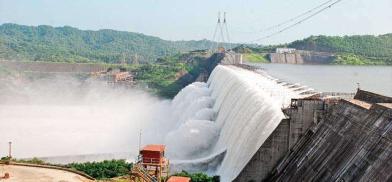Nepal to push for large hydro projects with India during Modi’s visit
In the last decade, China, whose influence has grown significantly in Nepal, has bagged several hydro-projects in the country. However, Beijing’s influence, especially in the country’s hydropower sector, has likely hit its limit, as an energy-surplus Nepal looks for markets— which in this case are India and Bangladesh—for exporting its electricity

Nepal is considering awarding the proposed 550MW West Seti Hydropower Project, earlier awarded to a Chinese firm, to India, said Nepali Prime Minister Sher Bahadur Deuba, adding that he will discuss the issue directly with Indian Prime Minister Narendra Modi during the latter's scheduled visit to Nepal on 16 May.
Conceived almost six decades ago in the country’s far western region on the Seti river, the project saw no progress, despite changing hands among multiple contractors, including two Chinese firms.
“We failed to invest in this project. So, during the visit of Prime Minister Modi, we will take up the matter with him,” Deuba was quoted as saying by The Kathmandu Post. “Since India is reluctant to purchase energy produced by Chinese companies in Nepal, we will talk with Modi for the engagement of Indian developers,” he added.
Last year, the Indian power regulator had reportedly conveyed to Nepal that it would not permit the sale of surplus electricity generated from Nepali projects having Chinese components (investment). Nepal last year became a power surplus country, with its peak generation capacity surpassing its domestic demand by almost 500MW.
Since coming to power in July last year, Deuba has been trying to put India-Nepal ties back on track—which was strained in the wake of the Kalapani boundary row—by focusing on enhancing economic and connectivity cooperation.
While addressing a rally for upcoming local polls, Deuba said on Tuesday, “There is the need for a decisive negotiation with a reliable Indian company for the development of the project. We need to invest in storage-type projects for energy security in the dry season [winter].”
The government, he said, will also discuss with India to develop the Pancheshwar Multipurpose Project, an ambitious 5000MW hydro project proposed to be built on the Mahakali river along the India-Nepal border in Uttrakhand.
The project, which was included in the Mahakali treaty signed between the two countries in 1996, has the potential to transform the region’s economy on both sides of the border and strengthen people-to-people ties, according to the former Indian ambassador to Nepal, Ranjit Rae.
In the last decade, China, whose influence has grown significantly in Nepal, has bagged several hydro-projects in the country. However, Beijing’s influence, especially in the country’s hydropower sector, has likely hit its limit, as an energy-surplus Nepal looks for markets— which in this case are India and Bangladesh—for exporting its electricity.
For Nepal, which has a huge trade deficit— roughly $5.9 billion—with India, its hydropower sector is extremely important, and possibly the only viable means to bridge the large trade deficit in the total bilateral trade of over $6.8 billion.
In this year alone, Nepal is estimated to have around 600-800MW of surplus electricity, with India allowing the sale of around 360MW in its open energy market.
With many small-scale projects nearing completion, this surplus energy will only grow in the coming years because of limited domestic demand in Nepal. These factors and dependency suggest two countries are likely to cooperate more closely on big future hydropower projects.
(SAM)








Post a Comment